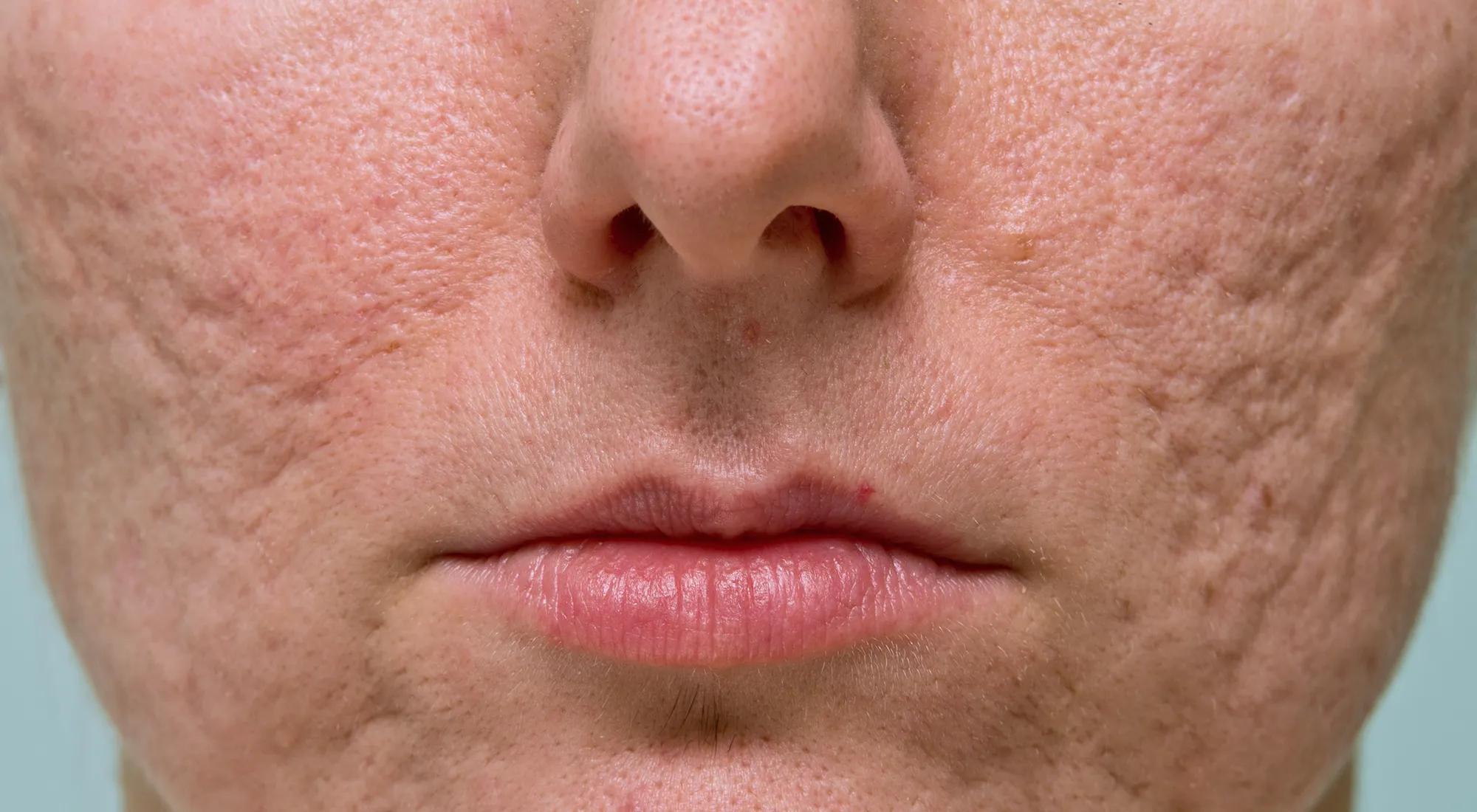Checking Out Skin Problems: Identifying and Treating Acne Scars for Healthier Skin
Acne scars stand for a significant concern for individuals looking for to preserve healthy skin, as they can affect both look and self-confidence. Comprehending the various kinds of scars, from atrophic to hypertrophic, is necessary for figuring out suitable therapy choices.
Understanding Acne Marks

The body's all-natural recovery process can lead to either atrophic marks, which look like depressions in the skin, or hypertrophic scars, which are elevated and arise from overproduction of collagen. Furthermore, the emotional toll of acne marks should not be ignored; lots of people report feelings of embarrassment, stress and anxiety, and decreased self-worth. This psychological burden can affect social communications and total high quality of life.
Resolving acne scars needs a detailed understanding of their formation and impact. Understanding of the possibility for long-term repercussions linked with neglected marks can encourage people to seek suitable therapies. Early intervention and efficient monitoring strategies can considerably enhance skin look and boost psychological resilience, emphasizing the significance of comprehending the complexities surrounding acne scars.
Sorts Of Acne Scars
Acne scars can be categorized into distinct types, each exhibiting one-of-a-kind features and requiring particular treatment techniques. acne scars. The primary sorts of acne marks include atrophic, hypertrophic, and keloid scars

Hypertrophic scars, on the other hand, are raised above the skin degree and are the result of too much collagen production during the recovery process. They generally continue to be within the borders of the original acne sore. Keloid scars are comparable but expand beyond the initial injury site, creating larger, elevated areas that can be itchy or painful.
Understanding these sorts of scars is crucial for picking ideal treatment choices. Various marks might respond better to certain treatments, such as laser therapies, fillers, or medical interventions, emphasizing the value of a customized strategy to acne scar management.
Recognizing Your Scars
Acne marks typically drop right into two groups: atrophic and hypertrophic scars. These can better be categorized right into ice-pick scars, boxcar marks, and rolling marks, each exhibiting unique characteristics and calling for different techniques for analysis.
Hypertrophic scars, on the various other hand, are raised and take place because of extreme collagen manufacturing during the healing procedure. Identifying the particular functions of your marks-- such as width, deepness, and appearance-- is vital for appropriate identification (acne and acne scars treatment). Furthermore, think about the distribution of scars throughout your skin, as this can show the extent and period of the acne problem
Involving with a dermatologist can provide valuable understandings right into the nature of your marks, helping in the differentiation in between numerous kinds. A comprehensive understanding of your scars will inevitably cause a more tailored and reliable treatment plan, making certain a more clear and healthier complexion.
Therapy Choices Readily Available
Recognizing the certain sort of acne scars existing on your skin lays the foundation for checking out effective treatment alternatives. Typical sorts of acne scars include atrophic (clinically depressed), hypertrophic (elevated), and post-inflammatory erythema.
For atrophic marks, options such as chemical peels, microneedling, and laser resurfacing are extensively used. Chemical peels off use acids to eliminate the outer layer of skin, advertising brand-new cell development.
Hypertrophic my company scars can be treated with corticosteroid shots to flatten the mark or laser therapy to reduce soreness and enhance appearance. Silicone gel sheets and pressure dressings might likewise assist in taking care of increased scars.
Additionally, facial fillers can briefly fill out depressions from atrophic marks, while medical excision might be suitable for severe situations. Each treatment alternative has its factors to consider and advantages, making it crucial to talk to a skin specialist. They can offer personalized referrals based on the type and extent of your marks, as well as your skin kind and general health.
Tips for Avoidance
Reliable avoidance methods can considerably decrease the likelihood of developing acne scars. Making use of non-comedogenic items aids protect against clogged up pores, which can aggravate acne.
Staying clear of need to pop or pick acne sores is crucial, as this can result in much deeper skin damage and raise the threat of scarring. Instead, consider making use of a chilly compress or over the counter therapies to decrease swelling and inflammation.
Sunlight defense is an additional essential facet of prevention; ultraviolet (UV) rays can darken marks and impede the healing see this site process. Using a broad-spectrum sunscreen with at the very least SPF 30 daily can shield the skin and advertise even recovery.
Finally, maintaining a well balanced diet plan rich in vitamins, minerals, and antioxidants supports skin wellness and healing. Remaining moisturized and managing stress and anxiety degrees can also play a significant function in decreasing acne flare-ups. By applying these techniques, individuals can dramatically reduce their opportunities of establishing acne marks.
Final Thought
In conclusion, understanding and identifying acne scars is important for efficient treatment and accomplishing healthier skin. Different kinds of acne scars, including hypertrophic and atrophic marks, require particular treatments tailored to specific requirements.
The body's natural recovery procedure can result in either atrophic scars, which show up as anxieties in the skin, or hypertrophic scars, which are increased and result from overflow of collagen. They are additional divided right into three subtypes: ice pick scars, boxcar marks, and rolling marks. Acne scars usually fall into two classifications: hypertrophic and atrophic scars. These can even more be categorized right into ice-pick marks, boxcar marks, and rolling marks, each exhibiting distinct attributes and requiring various methods for assessment.
Different types of acne scars, including hypertrophic and atrophic check out here marks, demand details treatments tailored to individual requirements.